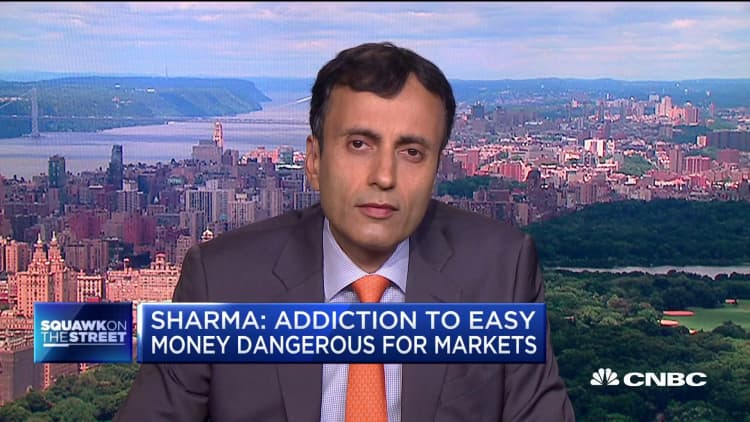The Federal Reserve is not just at a crossroads — it is at an absolute crossroads. The headline economic numbers show sustained growth and strong job creation. A net addition of 224,000 jobs last month, an unemployment rate sitting near a 50-year low and moderate inflation. The stock market is at historic highs, and President Donald Trump is boasting that this is the "best economy ever."
Yet in his congressional testimony last week, Fed Chairman Jerome Powell signaled an interest-rate cut after the Federal Open Market Committee meets on Tuesday and Wednesday.
So why, at a time when the U.S. economy is on solid ground, would the Federal Reserve consider a move typically reserved for economic recessions?
The economic reasons for cutting rates at this time are subtle. Fed officials, such as Chicago Fed President Charles Evans, argue that because the inflation rate has been consistently below the Fed's 2% target, the central bank's price stability mandate calls for at least one or two rate cuts this year. Evans went as far as saying he wouldn't mind having the inflation rate run above 2% for a while.
However, remember that the Federal Reserve has a "dual" mandate, which considers not only price stability but also what is called maximum sustainable employment. At 3.8%, the current unemployment rate is lower than the full employment (or natural) rate of unemployment, which is consistent with stable inflation. The natural rate of unemployment has historically hovered around 5%. Since this unemployment gap suggests that the prospects of future inflation outweighs the risk of recession, as inflation is a lagging economic indicator, it implies that the Fed should tighten monetary policy.
The Fed must balance both of these mandates when deciding on the right move for monetary policy. On balance, the best move at this time is to stand pat and remain neutral on rates.
Why no move is the best move right now
Another reason for cutting rates at this time is the possibility that the U.S. economy is not doing as well as it seems below the surface. Powell's testimony emphasized concerns over the Trump administration's trade war and the prospects of slower global economic growth. There is some evidence for this — the industrial production index came well under expectations for last month, the housing market has slowed considerably (housing starts are at a two-year low), and nonfarm payroll employment has been on a declining trend.
According to the Federal Reserve Economic Database, average monthly net job gains fell from 210,000 in 2015–17 to 201,000 over the next two years. Despite the strong job creation numbers last month, it follows a very weak May, and nonfarm payroll is averaging 172,000 so far this year.
Shooting bullets into the air now to scare off any potential threats would leave the Fed without any ammunition should those threats actually materialize.
A preemptive rate cut at this time may be a way for the Fed to head off a potential recession. But the FOMC needs to exercise extreme caution when reacting to economic events that have not yet happened. Most financial advisors would tell their clients that if you try to "time the market," you will eventually get burned. One could apply the same logic to monetary policy. The current fed funds rate of 2.75% is extremely low compared to historical averages. Raising capital, particularly for small and medium sized companies, is not currently a problem; mortgage rates are low for home buyers, and there is little evidence of stress in financial markets.
It is unclear whether lowering rates at this time will spur the additional investment or consumption needed to boost economic activity. Also, the Federal Reserve has, at most, nine 25-basis-point rate cuts in its arsenal before it reaches the zero interest rate bound. Shooting bullets into the air now to scare off any potential threats would leave the Fed without any ammunition should those threats actually materialize.
Fed chairman Powell has backed himself into a corner. The economic reasons for cutting rates at this time are tenuous at best. However, if the FOMC does not cut rates in July after signaling that it will, the Fed's credibility will be damaged and that will send financial markets into a tailspin. If it does cut rates as expected, then the focus will be on monetary policy looking forward. Will it be one and done, or signal a downward path for future interest rates?
Unless the Fed can clearly communicate the economic arguments for its policy, it will create the appearance that Powell has succumbed to the political pressures of the White House. That means rates will not be the only thing headed lower. Fed independence and credibility will take a step down.
—By Victor Li, Professor of Economics, Villanova School of Business. Previously, Li worked with former Fed Chairman Ben Bernanke at Princeton University from 1998–2000 and at the Federal Reserve as a visiting scholar at the Federal Reserve Bank of St. Louis. He was a senior economist at the Federal Reserve Bank of Atlanta from 2000–2001.






